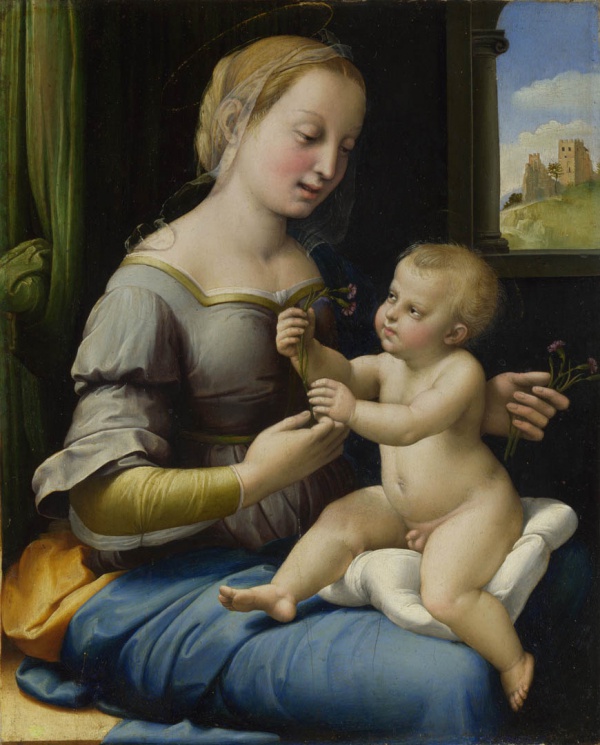Facts About The Madonna of the Pinks
The "Madonna of the Pinks" is a beautiful and intimate painting attributed to the Italian Renaissance master Raphael. This oil painting on fruitwood can be admired at the National Gallery in London. It captures a tender moment where a young Virgin Mary interacts with the Christ child, offering him carnations, which symbolize Christ's future Passion. The background, influenced by Netherlandish art, features a landscape seen through an arched window, symbolizing the end of the pagan world with Christ's birth.
Given its small size, the painting was likely intended for personal devotion. While the original patron remains unknown, it is speculated that it might have been commissioned for Maddalena degli Oddi, a member of a notable Perugian family. The painting later came into the possession of the artist Vincenzo Camuccini. It wasn't until 1991 that Nicholas Penny officially identified the painting as an authentic Raphael, leading to its acquisition by the National Gallery in 2004.
The painting's attribution to Raphael has sparked some controversy. Some art experts question the quality and authenticity of the work. They note that the color palette is more restrained than what is typically seen in Raphael's other paintings, utilizing natural ultramarine, azurite, lead-tin yellow, malachite, and verdigris.
Despite these debates, the "Madonna of the Pinks" remains an important piece in Raphael's oeuvre, showcasing his ability to combine profound religious symbolism with exceptional artistic skill.

 Mexico
Mexico